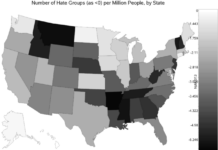With primary season heating up, and contested conventions a real possibility for both the Democratic and Republican Parties alike, the remaining candidates’ truthfulness should matter, but does it? Unfortunately, in today’s political landscape, truth and facts don’t matter much anymore, especially when one candidate in particular has the ability to turn lies into gold.
Only former Secretary of State Hillary Clinton (D-N.Y.) and Senator Bernie Sanders (D-Vt.) are left on the Democratic side, while Republican candidates have dwindled from 17 to three. They include frontrunner Donald Trump (R-N.Y.), Senator Ted Cruz (R-Texas), and Governor John Kasich (R-Ohio).
With so much at stake this election, and so far still to go, and – finally – so few candidates left, the Star Tribune looked at each and their overall truthfulness, as scored by independent fact-check service, Politifact.
Candidates Under The Gun
Politifact is one of two go-to fact checking services – the other being Factcheck.org. Almost without fail, when someone, Trump for example, says something that everyone knows can’t possibly be true (“thousands of Muslims cheering,” or “I don’t know where he was when I was fighting for healthcare”) you can rest assured that Politifact will tackle and rate the statement as true, false, or somewhere in between.
Politifact also researches the truthfulness of statements made by political analysts, anchors, and pundits as well as congressmen, senators, or even the President of the United States. Politifact has a file on each of the current crop of presidential hopefuls from both sides of the aisle.

Looking at each candidates percentage of true, mostly true, half-truth, mostly false, false and Pants on Fire statements, finding the most truthful might look simple.
For example,
- Overall, Gov. Kasich claims the greatest percentage of true statements.
- Sen. Sanders claims the greatest number of mostly true statements.
- Sec. Clinton claims the greatest number of half true statements.
- On the other end of the spectrum, Trump claims both the greatest percentage of Pants on Fire statements and false statements,
- Sen. Cruz claims an equal percentage of false and mostly false statements.
Some caveats regarding the fact check, though.
Omitted Data
To start, the Star Tribune graph offers incomplete data, giving the reader a less than accurate view of the candidates’ statements. Additionally, Politifact doesn’t rate every statement by every person in politics – and similarly, Politifact hasn’t rated every statement by every presidential candidate.
Furthermore, using Politifact’s more complete data and after accounting for Politifact’s actual methodology, we find that putting the candidates’ scorecards side by side would be like comparing apples to oranges.
The following screenshot shows the total number of statements vs. percentage of statement type.

The Star Tribune omitted the total number of statements rated for each fact check category from which the percentages are drawn. This takes the percentages shown out of context. It appears as if Politifact rated the same number of statements for each candidate, when this clearly is not the case.
In reality, 29 percent of 100 rated statements, as in Sen. Cruz’s numbers, is very different than 29 percent of 61 statements, which corresponds to Sanders’ numbers. The result is an inaccurate view of total truths and falsehoods told. This makes it almost impossible to judge the true rate of truthful statements.
What About The Fact Check Service?
Conversely, Politifact has its own issues to sort out. It’s fact checking method doesn’t allow it to rate statements consistently, and they warn readers in its methodology explanation. There is no set criteria on statement quantity or relevance in relation to others. The only thing that matters is quality. Original statement quality, fact check quality, and the truth.
In other words, As Politifact puts it,
“Because we can’t possibly check all claims, we select the most newsworthy and significant ones”
“We do not check opinion, and “recognize that is the world of speechmaking and political rhetoric there is license for hyperbole.”
“Is the statement leaving a particular impression that may be misleading?”
“Is the statement significant? We avoid minor ‘gotchas’ on claims that obviously represent a slip of the tongue.”
“Is the statement likely to be passed on and repeated by others?”
“Would a typical person hear or read the statement and wonder: Is that true?”
None of this means Politifact is wrong, lying, or stretching the truth. It doesn’t mean there’s a “liberal bias.” Don’t go twisting this analysis to make your own political point look good, got it?
What it means is that Politifact’s methods are inconsistent. This makes the resulting data incomplete. Then, when an outlet like the Star Tribune omits data from its own analysis, ot makes it difficult for readers to interpret correctly, and puts readers in the position of having to wonder whether there are ulterior motives for doing so.
The truthfulness ratings are by no means a comprehensive look at the candidates’ statements. However, they are a great starting point for readers to judge the overall tone and tenor of a candidate’s truthfulness, or for a fact check of their own.
Featured Image: Screenshot Via Star Tribune.





